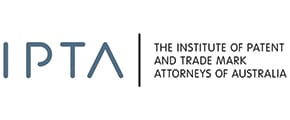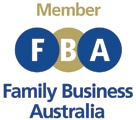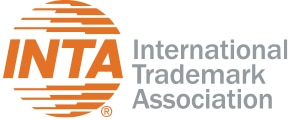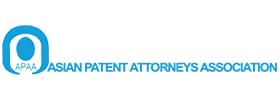Australian & International Patent Protection Services
Patent Preparation Lodgement Examination Opposition Monitoring Licensing Enforcement
Simplify Your Success – Let Wynnes take the complexity out of IP protection
Our Patent Attorneys are available for a free consultation. We are happy to discuss your situation with you in person, over the phone, or online.
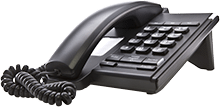
The Commercial Benefits Of Patent Protection
What is a Patent?
A patent is a form of intellectual property right granted by the government to an inventor. It provides the patent holder with the exclusive right to make, use, sell, and import the invention for a limited period, typically 20 years from the filing date. This legal protection is crucial in safeguarding innovations from unauthorised use, ensuring that inventors can reap the rewards of their creativity and investment.
When considering patent protection for your inventions, it’s essential to navigate through some common misconceptions.
To safeguard your invention in multiple countries, you need to file patents in each of those countries or regions.
The patent process is also more complex and time-consuming than often anticipated. It involves a thorough examination and can take several years to complete, requiring patience and strategic planning.
Holding a patent does not automatically guarantee commercial success or negate the need for effective marketing and innovation. The decision to patent should be weighed against the potential commercial viability of the invention, as the costs of obtaining and maintaining a patent can be substantial.
Please Be Aware
The following assets DO NOT provide protection or ownership of an invention:
Patents provide exclusive rights to your invention, preventing others from making, using, selling, or importing it without your permission. This means:
- Holding a patent can give you a significant edge over competitors, allowing you to be the sole provider of a unique product or technology.
- With exclusive rights, you can often command higher prices due to the lack of direct competition.
- Patents can make your business more attractive to potential investors, as they signify innovation, growth potential, and a competitive edge.
- Beyond manufacturing and selling your invention, patents allow for potential revenue through licensing agreements or selling the patent.
- Owning patents enhances your company’s image, showcasing your commitment to innovation and positioning you as a leader in your field.
- Patents provide a legal basis to challenge competitors who infringe on your invention, helping to secure your market position.
Is your invention patentable?
The invention must also be novel, have an inventive step (or innovative step depending on the type of patent application), be useful and be a manner of manufacture. The requirements are set out in the Patents Act 1990 and interpreted through the relevant case law.
In effect, the granting of a patent is a reward for introducing new technology into the country.
Advantages of a patenting your invention
If you have developed a niche product or process, you must protect it to own it and control it, so that you can use it to make money by delivering a product that only you can provide.
A patent provides the patentee with a monopoly to exclusively exploit an invention. In practice, the patent provides the patentee with a market advantage over the patentee’s competitors and gives the patentee time to secure market leadership in the relevant area of technology. A patent gives the patentee the exclusive rights to make and sell their invention. With a patent no one can legally copy the invention without obtaining authorisation from the patentee.
Furthermore, a patent is a legal right that may be assigned or licensed to others in consideration for an agreed sum of money.
If you have not patented your invention before releasing it to the public, you will surrender any rights that you would have to your innovation. Public disclosure of an invention will allow your competitors to freely use it for their commercial benefit. You will not be able to backtrack and apply for a patent for a publicly disclosed innovation at any point in the future.
Prior to receiving your patent acceptance, a Non-Disclosure Agreement (NDA) should be signed before sharing any details of your invention with anyone.
Applying for a Patent in Australia
The preparation and filing of an application for a patent is the first stage in seeking patent or exclusive rights for your invention. The quality of the patent and its ability to withstand validity examination will depend on how well it is drafted. The value of the invention is dependent on the quality of the patent specification and a patentee will only be paid money if the patent can not be found to be invalid or bypassed. The quality of the patent specification is pivotal and we at Wynnes recognise this fact and only prepare patent specifications to the highest level of quality.
The patenting process is a dynamic process and the strategy adopted in following a patent program will depend largely on the changing commercial realities of the market place and the relevant technology. At any stage, however, the patenting strategy can be changed and it is recommended that a six monthly review of the situation should be made to confirm whether to proceed to the next stage.
-
Provisional Patent Application
A provisional patent application is an initial patent application that secures a priority date and initiates the procedure in obtaining a patent. A provisional patent application is a comparatively inexpensive patent application that allows the applicant time to commercially assess the invention before proceeding to the next stage. A provisional patent application has a term of twelve months. In order to maintain the priority date and have continuing effect, a complete patent application which is associated with the provisional patent application must be filed before the expiry of the twelve months period.

2. Complete Patent Application
(i) Standard Patent Application
A standard patent application is an application that may be associated with a provisional patent application or filed in the first instance. Unlike the provisional patent application, the standard patent application has a set of claims, which defines the patent monopoly sought by the applicant.
The standard patent specification is published 18 months after the priority date.
Within prescribed time limits, the standard patent application is examined for compliance with the statutory requirements. An official report is issued either accepting the application or objecting to the acceptance of the application on statutorily defined grounds. The applicant has an opportunity to respond to the objections. This process is called the prosecution of the application. It is not uncommon for the examiner to issue one or more adverse reports. During the prosecution of the application, the Patent Examiner endeavours to restrict the scope of the patent monopoly while the applicant tries to obtain the broadest monopoly possible.
When the patent application is accepted, the application enters a three month opposition period during which a third party may oppose the granting of a patent on the application. An opposition can only be mounted on statutorily defined grounds. Compared to the number of patent applications which are filed very few applications are opposed.
After the opposition period has expired and if there are no opposition proceedings pending, the application proceeds to grant and a patent is issued. The term of a standard patent is twenty years from the filing date of the complete patent application. This period may be extended to a further five years in special circumstances.
The period between filing a standard patent application and obtaining a granted patent may vary between one to five years or longer. The variation in the length of time before a patent is granted depends on whether examination is expedited, the number of reports issued, the length of time before a response is filed and whether opposition proceedings are initiated. There may be commercial reasons to accelerate or delay the obtaining of a granted patent for an invention.

(ii) International Patent Application
An international patent application is a patent application under the Patent Cooperation Treaty (PCT) that can be filed with the Australian Patent Office and designating one or more of the countries which are party to the Treaty.
There are currently over 145 states party to the PCT including United States of America, Europe, Japan and China.
An international search report (ISR) and related written opinion will subsequently issue and the applicant has the further option of requesting international preliminary examination. The international preliminary examination must be requested within twenty-two months of the priority date or within three months of the ISR which ever is later. With international preliminary examination, the patentability of the invention described and claimed can be assessed and if deemed advantageous, amended, prior to the application entering the national phase stage.
At the national phase stage, the application must enter into one or more of the designated countries. If international preliminary examination has been requested national phase entry can be effected at any time up to 30/31 months from the priority date of the international patent application. If international preliminary examination has not been requested then national phase entry must be effected by 20/21 months after the priority date. Each national phase application will then be examined and prosecuted to grant before the relevant examining authority in the designated country.
Advantages of filing an international patent application compared with the filing of an application directly into a designated country include:
- providing an additional 18 months in which to determine the commercial success of the invention and to identify countries which will with time prove to be successful markets for the invention before incurring the considerable expenses in filing national phase applications, and
- being aware of relevant prior art identified in the international search report and objections raised during international preliminary examination that may also be raised during national phase examination. During international preliminary examination there is an opportunity to amend the specification and claims to avoid similar objections from being raised during national phase examination.
Patent Applications in Overseas Countries
A patent application may be filed in an overseas country with the filing of a national phase application during the national phase stage of the international patent application or directly with a separate application.
Patents are normally granted on a national basis. It is worth noting, however, that a European patent covering 38 member countries (and 2 possible extension states) may be granted from a single regional patent application. Regional patents may be granted in some African countries and some former Soviet states. However, there is no such thing as a world or international patent.
Patent applications in overseas countries are filed through our extensive network of patent associates in each country.
Making adjustments to pre-existing patents
If you have changed a process or look and feel of a product, introduced new product lines, your existing patent may no longer cover your commercialised product.
You will need to reassess whether your existing patent protection covers the new, altered version of the product.
Understand What You Can Protect With A Patent
New and inventive machines, apparatus, assemblies, devices and widgets can be protected. Often the method of use or manufacture of the machine or device can also be protected to broaden the scope of protection.
Chemical and biological processes can be protected. Business methods may be protectable depending on tangible effect provided by the method. Methods and processes where a new result is produced can be considered for patent protection.
Computer hardware and software, functionality associated to produce a new result can often be protected by a patent.
Kits containing multiple separate components which can be protected. Component parts can be protected often as a subgroup of an apparatus or assembly. It is important to consider patent protection for parts which are a key components of a more complex apparatus or device. A part can also be subject matter for a design.
Novel compounds, chemical processes (particularly commercial scale processes), purified biologicals, modified biologicals, new biological processes are protectable.
Register A Patent For Your Invention
There are many benefits of patent protection including:
- Setting your business apart from your competitors;
- Providing exclusive rights to your invention;
- Forming part of your marketing and branding messages;
- Formally recognising it on your balance sheet as an asset;
- Preventing new entrants or competitors taking away/over your hard work.
Our IP Australia Patent search and registration service will put you on the right path!
At Wynnes, our team of experienced attorneys can provide a free initial patent search help you to navigate the process of registering and managing your patents.
How Much Does It Cost To Register a Patent?
The cost for registering a Patent is dependent on how many classes your innovation should be protected in.
The cost of registering a patent can vary depending on several factors, including the complexity of the invention, the method of application and how many countries you are seeking protection in. Here is a general overview of the costs involved:
- Application Fees: Official fees start from $370. However, this does not include any pre-assessment or professional knowledge that will increase your chances of obtaining a granted patent that will provide you with a more complete protection and avoid rejections, opposition and removal – for which there are no refunds offered by IP Australia.
Standard Patent Application $370 Provision Patent Application $110 - Filing Fees: The initial fees paid when submitting your patent application to the patent office.
- Examination Fees: Fees for the detailed examination of your patent application to assess the novelty, inventiveness, and industrial applicability of your invention.
- Professional Fees: Costs for hiring a patent attorney or agent to prepare and process your patent application. These fees can vary significantly based on the complexity of the invention and the attorney’s expertise.
- Drawing Fees: If your patent application requires professional drawings, there will be fees for drafting these illustrations.
- Amendment Fees: If you need to make amendments or adjustments to your application after the initial filing, additional fees may apply.
- Maintenance or Renewal Fees: Periodic fees required to maintain the validity of your patent after it is granted. These fees typically increase over the life of the patent.
- International Filing Fees: If you are seeking patent protection in multiple countries, there will be additional filing fees for each country or region, plus possible translation costs.
- Prosecution Fees: Costs incurred during the negotiation process with the patent office to address any objections or requirements they may have.
- Additional Governmental Fees: Depending on the jurisdiction, there may be other specific fees, such as publication fees or fees for requesting an extension of time.
DIY Patent Applications: Common Mistakes and Risks
- Incorrect Searches: Without a comprehensive understanding of existing patents and public disclosures, you risk infringing on others’ rights or filing for something that isn’t novel, leading to rejection.
- Poorly Drafted Application: Drafting a patent application requires specific legal and technical language. DIY applications often lack the necessary detail and clarity, leading to broad, vague, or easily circumvented claims. This can result in weak or unenforceable patents.
- Disclosure Mistakes: Revealing too much or too little information can be detrimental. Over-disclosure can limit the scope of the patent, while under-disclosure can lead to a rejection for insufficient detail.
- Misunderstanding the Process: The patent process is complex and nuanced. Misunderstandings about deadlines, required documents, or procedural steps can lead to missed opportunities for protection or even abandonment of the patent.
- Inadequate Response to Office Actions: Responding to office actions (communications from the patent office) requires a nuanced understanding of patent law. Inappropriate or inadequate responses can weaken your patent’s scope or lead to outright rejection.
- Failure to Consider Global Protection: DIY filers often overlook the need for international protection or misunderstand the complexities of filing patents in multiple jurisdictions.
- Neglecting Maintenance Requirements: Once a patent is granted, it requires maintenance fees at regular intervals. Failure to comply with these requirements can result in the patent being invalidated.
- Underestimating Costs: While DIY might seem cheaper, the long-term costs due to errors, omissions, or legal complications can exceed the cost of professional assistance.
- Not Monitoring the Market: Failing to monitor the market for potential infringements can render a patent less valuable, as enforcement is the patent holder’s responsibility.
Given these challenges, it is always advisable to seek professional advice, especially for complex patents or when planning to register in multiple jurisdictions.
Patent Infringement, Opposition & Removal
Understanding the concepts of patent infringement, opposition, and removal is vital for navigating the complexities of patent law in Australia. Here is a brief overview of each aspect:
Patent Infringement
- Definition: Patent infringement occurs when a party makes, uses, sells, or imports a patented invention without permission from the patent holder.
- Assessment: Infringement is typically assessed by comparing the claims of the patent with the allegedly infringing product or process. If the product/process falls within the scope of the patent claims, it may constitute infringement.
- Consequences: If infringement is proven, the court can order remedies such as damages or an injunction to prevent further infringement.
- Defences: Defences against infringement may include proving that the patent is invalid, that the accused product/process does not infringe, or that the use falls under an exemption (such as for research).
Patent Opposition
- Process: After a patent application is published and before it is granted, third parties can oppose the grant of the patent in Australia.
- Grounds for Opposition: Opposition can be based on several grounds, including lack of novelty, lack of inventive step, or that the patentee is not entitled to the patent.
- Outcome: If the opposition is successful, the patent may be refused, or its scope may be reduced. If unsuccessful, the patent proceeds to grant.
Patent Revocation (Removal)
- Grounds for Revocation: A patent can be revoked (removed) if it is found that the invention is not novel, lacks an inventive step, is not useful, or if the patent was granted to someone who was not entitled to it.
- Process: Revocation can occur via a court proceeding or, in some cases, through re-examination by the patent office.
- Consequences: If a patent is revoked, it is as though the patent never existed, removing the protection it provided.
Key Points to Consider
- Legal Advice: Given the complexity of patent law, it is often essential to seek legal advice from a patent attorney, particularly in cases of infringement or opposition.
- Monitoring and Enforcement: Patent owners should monitor the market for potential infringements and enforce their rights to maintain the patent’s value and efficacy.
- Documentation and Evidence: Keeping detailed records and evidence of your invention’s development process is important, especially in disputes over entitlement or originality.
Understanding these aspects provides a basic framework, but patent law can be intricate, and specific cases may have unique elements that require professional legal analysis.
Have Your Received “Cease and Desist” Notice?
Receiving a cease and desist letter is a serious matter that can have significant legal and financial consequences. A patent attorney can provide the expertise and guidance necessary to navigate this situation effectively.
It is highly recommended to seek advice from a patent attorney if you receive a cease and desist letter regarding your product. Here are several reasons why consulting with a patent attorney is crucial:
- Understanding the Legal Implications: A patent attorney can help you understand the specific allegations made in the cease and desist letter. They can clarify whether your product is alleged to infringe on someone else’s patent rights and the potential legal implications of such an infringement.
- Expertise in Patent Law: Patent law is highly specialised and complex. An experienced patent attorney will have the necessary expertise to navigate these complexities, including the interpretation of patent claims and the assessment of infringement.
- Evaluating the Validity of the Claim: Your attorney can evaluate the validity and enforceability of the patent in question. This includes assessing whether the patent is likely to be valid and whether your product actually infringes upon the patent claims.
- Formulating a Response: It’s crucial to respond appropriately to a cease and desist letter. An attorney can advise on the best course of action, whether it’s to cease operations, negotiate a license or settlement, challenge the validity of the patent, or defend against the allegations of infringement.
- Negotiating on Your Behalf: If negotiation is a viable option, your attorney can engage with the patent holder on your behalf to reach a settlement or licensing agreement.
- Representation in Legal Proceedings: Patent attorneys can represent you in regard to IP Australia matters. If the dispute escalates to legal proceedings, a patent attorney can work closely with patent lawyers.
- Preventative Advice for Future Products: Beyond the immediate issue, a patent attorney can advise on strategies to avoid future patent infringement issues, such as conducting freedom-to-operate searches for new products.
WE ARE PROUD MEMBERS OF
